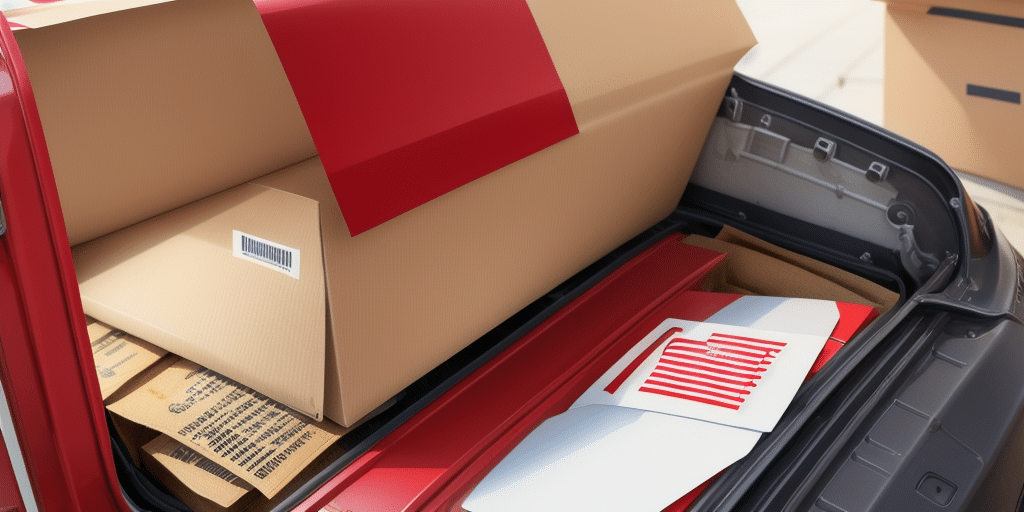Why Mail Insurance is Essential for Your Business
For businesses that rely heavily on shipping valuable or fragile items, mail insurance is a critical component of your logistics strategy. Accidents during transit, such as theft, loss, or damage, can lead to significant financial setbacks. Insurance not only safeguards your packages but also protects your business from potential financial losses.
Financial Protection
Without mail insurance, your business bears the full brunt of any loss or damage during transit. Insuring your shipments ensures that you receive compensation, mitigating the financial impact of unforeseen events.
Enhancing Customer Trust
Offering mail insurance demonstrates to your customers that you value their purchases and are committed to their satisfaction. This assurance can lead to increased customer loyalty and positive word-of-mouth, enhancing your business reputation.
Factors Influencing the Cost of Mail Insurance
The cost of mail insurance is influenced by several factors, each contributing to the overall premium. Understanding these factors can help you make informed decisions when selecting insurance options.
Value of Shipped Items
The higher the value of the items you ship, the more expensive the insurance will be. Insurers calculate premiums based on the declared value of the contents, ensuring adequate coverage in case of loss or damage.
Shipping Distance
International shipments typically incur higher insurance costs compared to domestic ones due to increased risks and longer transit times. The distance your package travels plays a significant role in determining the insurance premium.
Level of Coverage
The extent of coverage you choose directly impacts the cost. Comprehensive coverage that includes a wider range of risks will be more expensive than basic coverage options.
Shipping Method
Expedited shipping methods, such as overnight delivery, usually come with higher insurance costs compared to standard shipping. This is due to the faster transit times and the premium nature of the service.
Type of Items and Packaging
Items classified as high-risk, such as electronics or jewelry, may attract higher insurance premiums. Additionally, proper packaging reduces the risk of damage, potentially lowering insurance costs.
Types of Mail Insurance Policies
Various mail insurance policies cater to different business needs. Understanding the available options can help you choose the most suitable policy for your shipping requirements.
Standard Insurance
Offered by most mail carriers, standard insurance typically covers loss or damage up to a predetermined amount, usually around $100. This option is cost-effective but may not suffice for high-value items.
Third-Party Insurance
Third-party insurers provide coverage options beyond what carriers offer. This can include higher coverage limits and specialized protection for specific types of goods. Policies vary in cost based on the item's value and desired coverage level.
Priority Mail Express Insurance
Services like USPS Priority Mail Express offer insurance up to $100 at no additional cost, with higher coverage options available for an extra fee. This is ideal for urgent and valuable shipments.
Calculating and Reducing Mail Insurance Costs
Understanding how insurance costs are calculated and implementing strategies to reduce these costs can optimize your shipping budget without compromising on coverage.
Calculating Insurance Costs
To determine the cost of mail insurance, consider the item's value, shipping distance, and desired coverage level. Many carriers provide online calculators, or you can consult with your insurance provider for accurate quotes.
Tips for Reducing Insurance Costs
- Choose Economical Shipping Methods: Opt for standard shipping when speed is not a priority to lower insurance premiums.
- Bundle Shipments: Consolidate multiple packages into a single shipment to reduce the number of insurance policies required.
- Increase Deductibles: Selecting a higher deductible can lower your insurance costs, though it means you'll pay more out-of-pocket in the event of a claim.
- Ensure Proper Packaging: Well-packaged items are less likely to incur damage, potentially reducing insurance premiums.
- Compare Providers: Different insurance providers offer varying rates and coverage options. Use comparison tools like those from the American Express Business Insurance Guide to find the best rates.
Selecting the Right Mail Insurance Policy
Choosing the appropriate mail insurance policy involves evaluating your business needs, understanding policy details, and assessing the reliability of the insurance provider.
Evaluating Coverage Needs
Assess the value of the items you regularly ship and determine the level of coverage necessary to protect your business adequately. Consider factors like item fragility, destination, and shipping frequency.
Understanding Policy Details
Carefully review policy terms, including coverage limits, exclusions, and claim procedures. Understanding these details ensures that you select a policy that aligns with your business requirements.
Assessing Insurance Providers
Choose reputable insurance providers with strong financial stability and positive customer reviews. Providers like Insureon and Travelers are known for their reliable coverage and customer service.
Filing Claims and Managing Your Insurance
Efficiently managing your mail insurance, including filing claims and regularly reviewing policies, ensures ongoing protection and minimizes disruptions in your shipping operations.
Filing a Claim
If you experience a loss or damage, promptly file a claim with your insurance provider. Ensure you have all necessary documentation, such as proof of item value, shipping receipts, and photographs of the damage, to support your claim.
Regularly Reviewing Policies
As your business evolves, so do your shipping needs. Regularly review and update your mail insurance policies to ensure they continue to meet your current requirements. This proactive approach helps maintain adequate coverage and can prevent gaps in protection.
Benefits of Investing in Mail Insurance
Investing in mail insurance offers numerous advantages that extend beyond mere financial protection, contributing to the overall efficiency and reputation of your business.
Financial Security
Mail insurance provides a safety net against unexpected losses, ensuring that your business can recover without significant financial strain.
Customer Satisfaction
By offering reliable insurance options, you enhance customer trust and satisfaction. In the event of a loss, your ability to promptly compensate or replace items maintains positive customer relationships.
Operational Efficiency
With insurance in place, the process of handling lost or damaged shipments becomes streamlined. Quick resolution of claims minimizes downtime and keeps your shipping operations running smoothly.
Understanding Policy Coverage and Limitations
It is crucial to comprehend the specifics of your mail insurance policy to ensure that you are adequately covered and to avoid unexpected exclusions.
Coverage Limits
Each policy has a maximum payout limit. Ensure that the coverage limit is sufficient to cover the full value of your shipments. For high-value items, consider policies that offer higher coverage limits.
Deductibles
The deductible is the amount you must pay before insurance coverage applies. Balancing the deductible with your premium costs can optimize your insurance expenses.
Exclusions and Limitations
Policies may exclude certain types of items or conditions. Common exclusions include perishable goods, hazardous materials, and items not properly packaged. Familiarize yourself with these exclusions to avoid denied claims.
Conclusion
Mail insurance is a vital investment for any business that depends on shipping products. By understanding the factors that influence insurance costs, exploring various policy options, and implementing strategies to reduce expenses, you can effectively protect your business from potential losses. Additionally, selecting the right insurance provider and regularly reviewing your policies ensures continuous coverage tailored to your evolving business needs. Prioritizing mail insurance not only safeguards your financial interests but also enhances customer trust and operational efficiency, contributing to the long-term success of your business.






















